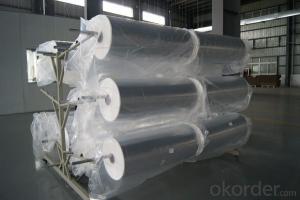Air conditioning flexible ducts are the unsung heroes of HVAC systems. They play a crucial role in maintaining the comfort and efficiency of our living and working spaces. But why are they so important, and what makes them stand out from other components in the HVAC system? Let’s dive into the world of flexible ducts and explore their significance in modern heating, ventilation, and air conditioning systems.
The Invisible Workhorse
Imagine a system that works tirelessly behind the scenes, ensuring that the air you breathe is clean, fresh, and at the perfect temperature. That’s the role of air conditioning flexible ducts. They are the veins and arteries of the HVAC system, transporting conditioned air throughout the building. Without them, the system would struggle to deliver the desired temperature and air quality to every corner of the space.
Design and Construction
Flexible ducts are designed to be adaptable and easy to install. They are made from a variety of materials, including flexible metal, plastic, and composite materials. The flexibility of these ducts allows them to navigate around obstacles and fit into tight spaces, making them ideal for retrofit projects or areas with complex structures.
Energy Efficiency
One of the standout features of flexible ducts is their energy efficiency. They are designed to minimize air leakage, which means less energy is wasted in heating or cooling unconditioned spaces. This not only saves on energy bills but also contributes to a greener environment by reducing the carbon footprint of the HVAC system.
Customizability
Another advantage of air conditioning flexible ducts is their customizability. They can be easily modified to fit the unique needs of a space. Whether it’s a residential home with odd-shaped rooms or a commercial building with specific airflow requirements, flexible ducts can be tailored to meet these demands.
Sound Attenuation
Have you ever been bothered by the noise of your HVAC system? Flexible ducts can help with that. They have insulating properties that can reduce the transmission of noise from the system, providing a quieter and more comfortable environment.
Easy Maintenance and Replacement
Maintenance and replacement of flexible ducts are relatively simple tasks. Since they are lightweight and easy to handle, cleaning or replacing them does not require a significant amount of labor or specialized tools. This makes them a cost-effective solution for long-term HVAC system management.
Challenges and Solutions
Despite their many benefits, flexible ducts also face some challenges. For instance, they can be more susceptible to damage from rodents or moisture. However, with proper installation and regular inspections, these issues can be mitigated.
The Future of Flexible Ducts
As technology advances, so do the capabilities of flexible ducts. Innovations in material science and design are leading to more durable, efficient, and environmentally friendly duct options. The future looks bright for these essential components of HVAC systems.
In Conclusion
Air conditioning flexible ducts are more than just a component of the HVAC system; they are a vital link that connects comfort, efficiency, and sustainability. By understanding their importance and embracing their advantages, we can create healthier, more comfortable, and energy-efficient environments for ourselves and our communities.

